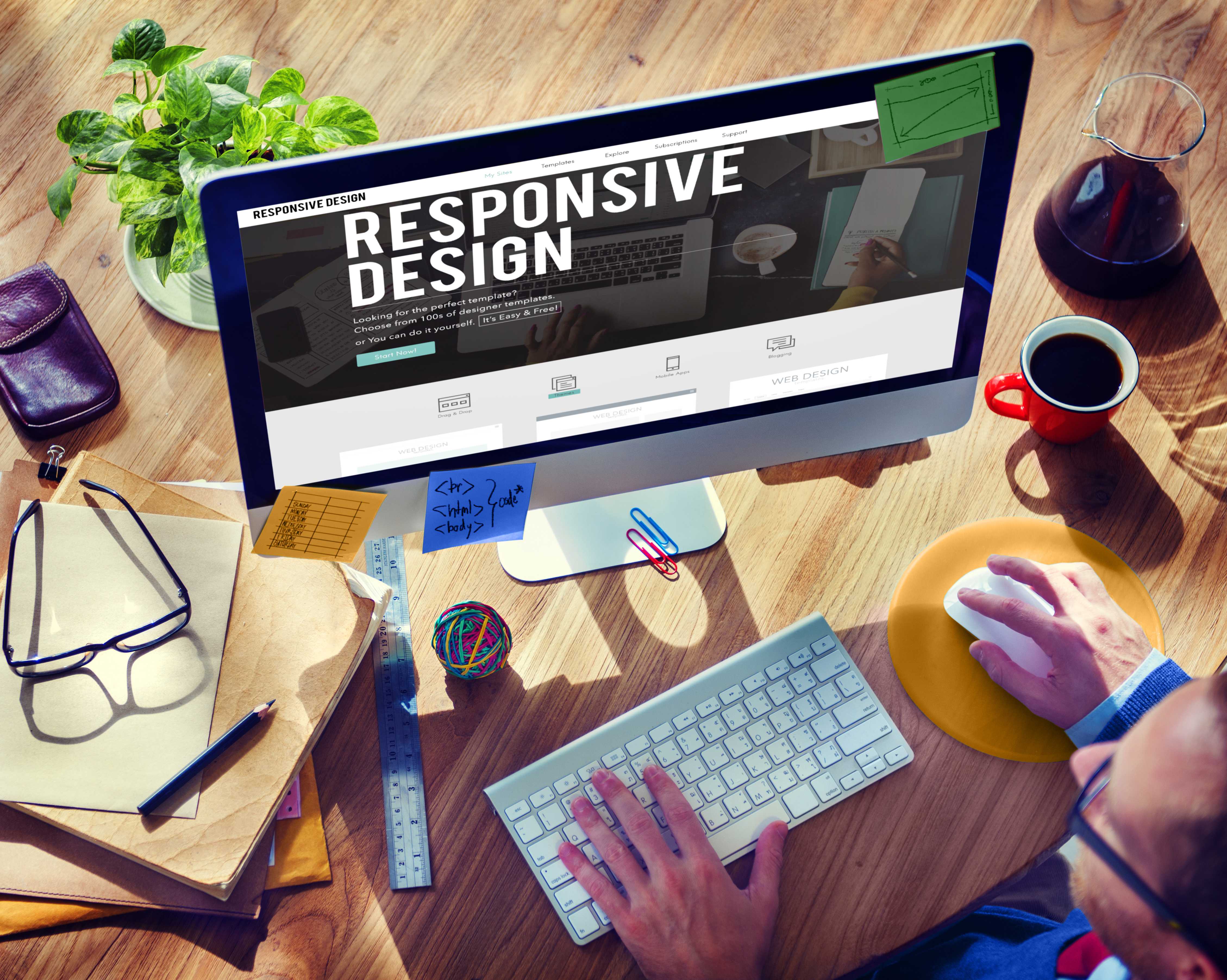What are the Latest Trends in Website Design That Businesses Should Know About?

The world of website design is always evolving. Keeping up with the latest trends can be challenging.
But staying updated is crucial for any business. Website design trends change rapidly. What worked last year might not be effective today. Businesses must adapt to stay relevant and engage their audience. In this post, we’ll explore the latest trends in website design.
These trends can help businesses create a modern, user-friendly online presence. From minimalist designs to interactive elements, understanding these trends is key. They can enhance the user experience and boost engagement. So, let’s dive into the latest trends that can shape your website and attract more visitors.
Minimalist Design
In today’s fast-paced digital world, minimalist design has become a significant trend in website design. It focuses on simplicity and functionality. This design approach reduces clutter and highlights essential elements. Businesses aiming to create an impactful online presence should embrace minimalist design. Below are some key components of minimalist design.
Clean Layouts
Clean layouts are fundamental in minimalist design. They provide a clear and organized structure. This ensures that users can find information quickly. A clean layout also enhances the overall user experience. Navigation becomes intuitive and seamless.
- Simple menu structures
- Consistent alignment
- Clear visual hierarchy
Whitespace Utilization
Whitespace, also known as negative space, plays a crucial role in minimalist design. It refers to the empty spaces between elements. Proper utilization of whitespace enhances readability and focuses attention on key content.
| Benefits of Whitespace |
|---|
| Improves readability |
| Increases user focus |
| Creates a balanced layout |
Using whitespace effectively makes a website look elegant and professional. It prevents the design from appearing crowded. This simplicity can lead to higher engagement and better user retention.

Dark Mode
Dark Mode is an increasingly popular trend in website design. It offers a sleek, modern look that many users find appealing. Dark Mode uses dark backgrounds with light text, reducing the strain on users’ eyes. This design choice is not just about aesthetics; it has functional benefits too.
User Preference
Many users prefer Dark Mode for its visual comfort. It reduces glare and makes reading more comfortable, especially in low-light environments. This preference is evident in the growing number of apps and websites offering a Dark Mode option. By incorporating Dark Mode, businesses can cater to user preferences, enhancing user experience.
Battery Saving
Dark Mode can help save battery life on devices with OLED screens. Dark pixels use less power, extending the battery life of smartphones and tablets. This is a significant advantage for users who spend a lot of time on their devices. By adopting Dark Mode, websites can contribute to a more energy-efficient user experience.
Mobile-first Design
Mobile-First Design is a crucial trend in website development today. Businesses must prioritize this approach to meet user expectations. As more people use smartphones for browsing, sites need to be mobile-friendly first. This ensures a seamless experience across all devices.
Responsive Design
Responsive design adapts the website layout to various screen sizes. It ensures the content looks good on any device. This approach eliminates the need for separate mobile and desktop sites. Businesses save time and resources while providing a consistent user experience.
Using flexible grids and layouts, responsive design adjusts images and other elements. This technique helps maintain readability and usability. Users enjoy a smooth and engaging browsing experience, regardless of their device.
Touch-friendly Interfaces
Touch-friendly interfaces are vital for mobile-first design. They enhance usability for touchscreen devices. Buttons and links must be large enough to tap easily. This reduces user frustration and increases interaction.
Designers should also consider touch gestures. Swiping, pinching, and zooming are common on mobile devices. Ensuring these gestures work well improves user satisfaction. Touch-friendly interfaces make navigation intuitive and enjoyable.
Micro-interactions
In the digital age, micro-interactions play a crucial role in web design. These small, subtle animations or changes engage users and enhance their experience. Let’s dive into how micro-interactions can transform user engagement and feedback mechanisms on your website.
User Engagement
Micro-interactions significantly boost user engagement. They provide immediate responses to user actions, creating a dynamic browsing experience. For instance, a button changing color when clicked confirms the action. This small interaction keeps users engaged and reduces bounce rates.
Another example is a loading spinner that informs users something is happening. It reassures them their request is being processed. These tiny details collectively improve the overall user experience.
Feedback Mechanisms
Effective feedback mechanisms are essential for a responsive website. Micro-interactions offer real-time feedback, making the interface feel alive. For example, an error message that appears instantly if a form field is incorrectly filled.
Or a subtle vibration on mobile devices when an action is completed. This immediate feedback helps users understand their actions and correct mistakes quickly. It enhances usability and makes the website more intuitive.
In summary, implementing micro-interactions can significantly elevate a website’s functionality. They enhance user engagement and provide efficient feedback mechanisms, leading to a more satisfying user experience.
Voice User Interface
Voice User Interface (VUI) has become a key trend in website design. Businesses are increasingly integrating voice capabilities into their websites. This shift enhances user experience by making interactions more natural and intuitive. Let’s explore some crucial aspects of VUI.
Voice Search Optimization
Optimizing for voice search is essential. Many users now rely on voice commands to find information. Websites need to adapt to this change. Here are a few steps to optimize for voice search:
- Focus on long-tail keywords and conversational phrases.
- Ensure your content answers common questions directly.
- Improve your local SEO to capture nearby voice search queries.
By optimizing for voice search, businesses can enhance their online visibility. This leads to improved user engagement and higher conversion rates.
Voice Commands
Voice commands are transforming how users interact with websites. Instead of clicking, users can now speak to navigate and perform tasks. Implementing voice commands involves:
- Integrating voice recognition technology.
- Creating a set of actionable voice commands for key functions.
- Testing and refining to ensure accuracy and ease of use.
This technology can improve accessibility for users with disabilities. It also offers a faster, hands-free experience for all users.
Incorporating voice commands can set your business apart. It’s a step towards a more engaging and innovative website design.

Augmented Reality
Augmented Reality (AR) is transforming website design. AR blends digital content with the real world. This creates a unique user experience. Businesses should understand AR to stay competitive. Let’s explore two exciting AR trends in website design.
Interactive Experiences
Interactive experiences engage users like never before. AR allows users to interact with products online. Users can see a 3D model of a product. They can rotate it and see every detail. This makes online shopping more engaging. It also helps users make informed decisions. An engaging website keeps users coming back.
Virtual Try-ons
Virtual try-ons are gaining popularity. They allow users to try products online. This is especially useful for fashion and beauty brands. Users can see how clothes fit or how makeup looks. This reduces return rates and increases customer satisfaction. Virtual try-ons offer a real-world shopping experience from home.
Ai And Chatbots
AI and chatbots are transforming website design. They provide enhanced user experiences and streamline business operations. By integrating AI-driven technologies, businesses can engage visitors more effectively.
Customer Service
AI-powered chatbots are revolutionizing customer service. They offer instant responses to queries, 24/7. This reduces the need for human agents and improves customer satisfaction. Chatbots can handle multiple conversations at once, making them efficient.
Here are some benefits:
- Immediate response times
- Increased customer engagement
- Lower operational costs
For businesses, this means fewer resources spent on customer support. It also means happier customers, who receive quick and accurate answers.
Personalized Experiences
AI and chatbots also enable personalized experiences. They analyze user behavior to offer tailored content. This makes the website more engaging for each visitor. Personalization can lead to higher conversion rates.
Consider these personalization methods:
- Product recommendations based on browsing history
- Personalized greetings and messages
- Custom content based on user preferences
For instance, an e-commerce site can suggest products similar to those a user has viewed. This targeted approach can significantly enhance user experience.
Incorporating AI and chatbots in website design is not just a trend. It is a smart move for businesses aiming to stay competitive.
3d Elements
In the ever-evolving world of website design, 3D elements are taking center stage. These elements add depth and interaction, creating a more engaging user experience. Businesses that integrate 3D elements into their websites can captivate their audience, making their site memorable and impactful.
Immersive Visuals
Immersive visuals draw users into the website. They create a sense of depth and realism that 2D images cannot match. These visuals can make products feel tangible, enhancing the shopping experience. For example, a 3D model of a product allows users to view it from all angles, simulating a real-life interaction.
Businesses can use immersive visuals to showcase their products or services in a more engaging way. This technique can lead to higher conversion rates as users feel more confident in their purchase decisions.
Engaging Animations
Engaging animations bring websites to life. They guide users through the content, making the browsing experience more enjoyable. Animations can highlight important features, draw attention to calls-to-action, or simply add a touch of personality to the site.
For instance, a subtle animation when hovering over a button can encourage users to click. These small details can significantly improve user interaction and satisfaction.
| Feature | Benefit |
|---|---|
| 3D product models | Enhanced product visualization |
| Immersive backgrounds | Increased user engagement |
| Animated interactions | Better user experience |
Incorporating 3D elements into website design can set a business apart from competitors. It makes the site more engaging, interactive, and visually appealing. This trend is one that businesses should definitely consider adopting.
Bold Typography
Bold typography is a significant trend in website design. It captures attention and enhances readability. Businesses are using bold fonts to create a strong visual impact. This design trend is not just about making text larger, but also making it more engaging and easier to read.
Readable Fonts
Choosing readable fonts is crucial for effective communication. Fonts should be clear and legible, even on small screens. Sans-serif fonts like Arial or Helvetica are popular choices. They are simple and clean, making them easy to read. Here are some tips for selecting readable fonts:
- Use fonts with clear letterforms.
- Ensure adequate spacing between letters and lines.
- Avoid overly decorative fonts.
Attention-grabbing Headlines
Bold typography is perfect for attention-grabbing headlines. Headlines should stand out and draw the reader’s eye. Here’s how to make your headlines more effective:
- Use larger font sizes for headlines.
- Incorporate contrasting colors.
- Employ different font weights to add emphasis.
By combining readable fonts and bold headlines, your website can enhance user experience. This approach makes content more accessible and engaging for visitors.

Sustainable Design
Sustainable design is becoming more important in website development. Businesses are focusing on creating eco-friendly and energy-efficient websites. This not only benefits the environment but also enhances user experience.
Eco-friendly Practices
Eco-friendly practices help reduce the carbon footprint of websites. By using green hosting services, you can decrease energy consumption. Green hosting uses renewable energy sources like wind and solar power. This makes your website more sustainable.
Another practice is to optimize images and videos. Large files can slow down your website and use more energy. Compressing these files reduces their size without losing quality. This speeds up your site and saves energy.
Energy-efficient Websites
Energy-efficient websites load faster and use less energy. One way to achieve this is by minimizing the use of heavy scripts. Heavy scripts can slow down your site and increase energy consumption. Use lightweight scripts to improve efficiency.
Another method is to use a simple design. A clean, minimalist design reduces the amount of data that needs to be loaded. This makes your website faster and more energy-efficient. Users will also appreciate the quick loading times.
Inclusive Design
Inclusive design ensures websites are usable by everyone. This includes people with disabilities, different cultural backgrounds, and varying levels of tech experience. By focusing on inclusive design, businesses can reach a broader audience. It also shows a commitment to diversity and equality.
Accessibility Features
Accessibility features are crucial in inclusive design. They help people with disabilities use websites easily. For example, screen readers are essential for visually impaired users. They read out text on the screen. Keyboard navigation is another important feature. It allows users to navigate a website without a mouse. Color contrast is also vital. It ensures text is readable against the background. Alt text for images helps describe visuals for those who can’t see them. These features make websites more user-friendly for everyone.
Diverse Representation
Diverse representation means showing different cultures and lifestyles. It makes everyone feel included. Use images that show people of various races, ages, and abilities. This helps users connect with your brand. Use inclusive language in your content. Avoid slang or jargon that might exclude some readers. Offer content in multiple languages if possible. This helps reach a global audience. Diverse representation creates a welcoming environment for all users.
Frequently Asked Questions
What Are The Top Web Design Trends?
Minimalism, dark mode, and mobile-first design are top trends. They enhance user experience and improve visual appeal.
How Is Ai Impacting Web Design?
AI personalizes user experience, automates tasks, and improves design efficiency. It’s transforming how websites are created and maintained.
Why Is Mobile-first Design Important?
Mobile-first design ensures websites are optimized for mobile devices. It provides better user experience and improves search engine rankings.
What Role Do Animations Play In Web Design?
Animations enhance user engagement and storytelling. They make websites more interactive and visually appealing.
Conclusion
Understanding the latest website design trends is crucial for business success. Adapt to these changes to stay relevant and competitive. Focus on user experience, responsive design, and accessibility. Ensure your website is mobile-friendly and fast. Use bold colors and clean layouts.
Incorporate interactive elements for better engagement. Regularly update your site to keep it fresh. Keep an eye on emerging trends to stay ahead. Implement these ideas to enhance your online presence. Stay informed and evolve with the digital landscape. Your business will benefit from a well-designed, modern website.



